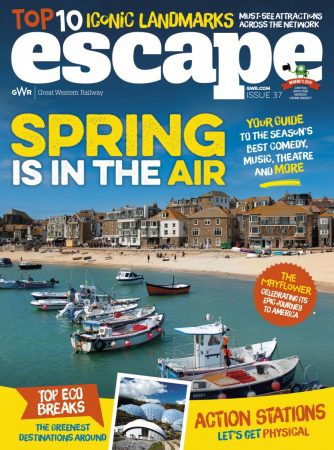
On the Roald Dahl trail in Cardiff
To mark the anniversary of Roald Dahl’s birth this month, here’s our guide to the Charlie and the Chocolate Factory author’s childhood in Cardiff.
Roald Dahl is the big famous giant of children’s literature and this month marks 101 years since his birth. Born on 13 September 1916 in Llandaff, Cardiff, Dahl’s popularity has if anything only increased since his death on 23 November 1990, with Harry Potter creator JK Rowling his one serious rival among British writers for children.
In fact, Rowling chose Dahl’s Charlie and the Chocolate Factory, first published in 1964, as one of her ‘classic books to read’ in a 2006 survey.
Close to Dahl’s heart was the Norwegian Church in Cardiff Bay, where he and his siblings were baptised. The church spoke to Dahl’s memories of growing up in Wales, and also to his family’s Norwegian heritage (his parents were Norwegian, and they named him after the great Norwegian explorer Roald Amundsen). Needless to say, Welsh and Norwegian cultures are awash with myths and legends populated by the same kind of supernatural figures – giants, witches, ogres – which frequently reoccur in Dahl’s own stories for children.
His major preoccupation with children gaining their revenge on wicked adults also has its roots in fairy tales, and in moral verse. The original Norwegian Church had fallen into disrepair by the 1970s, and Roald Dahl led the campaign to have it restored. Nowadays it is part of the Cardiff Bay Development and is a popular venue for arts exhibitions and events (norwegianchurchcardiff.com).
It was also in Cardiff that Dahl began his schooling, at Llandaff Cathedral School, before his widowed mother packed him off to board at St Peter’s Preparatory School in Weston-super-Mare in 1925. Weston-super-Mare itself is on the Great Western Railway network and its golden beach is worth a visit.
Today, Cardiff celebrates Dahl’s ties to the city in a number of ways. Roald Dahl Plass on Cardiff Bay is home to both the Senedd, the Welsh Assembly Building, and the Wales Millennium Centre (Plass, by the way, means ‘space’ in Norwegian). Genre TV fans will also know Roald Dahl Plass from its appearances in episodes of Doctor Who and Torchwood.
In 2009, a blue plaque honouring Dahl’s Welsh roots was unveiled by his widow Liccy and his son Theo on the site of the fearsome Mrs Pratchett’s sweetshop in the High Street at Llandaff, as mentioned in Dahl’s autobiographical volume Boy (1984).




